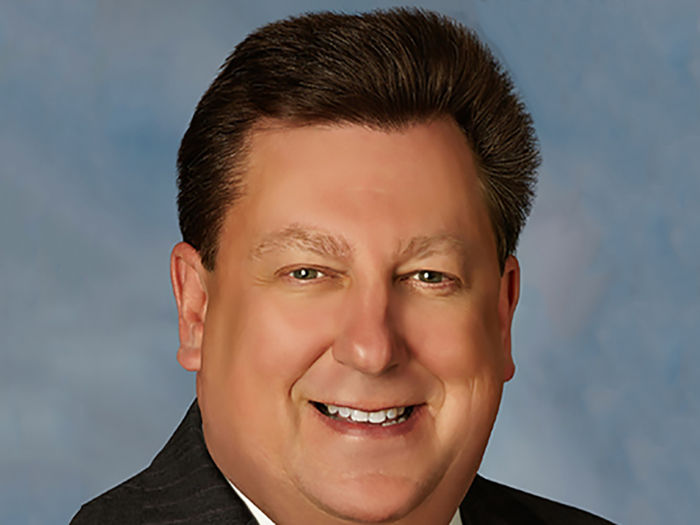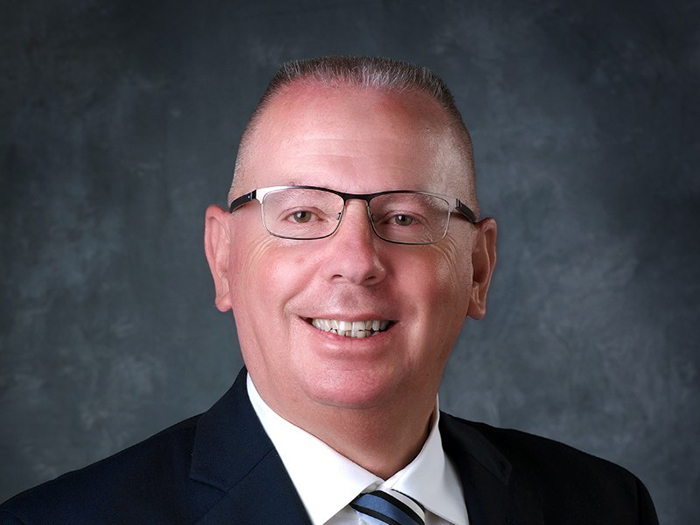How Gallagher’s Larry Hansard Became a Telemedicine Coverage Expert

Larry Hansard, now one of Gallagher’s telemedicine experts, wanted to be a stockbroker. After working in securities for three years after college, “I hated it,” he said, and so he moved to employee benefits.
His employer, a big national brokerage, was dividing into industry groups. Then in his late 20s and looking for a new challenge, he had his eye on oil and gas, but his employer tapped him for health care.
Typical in his career, “the opportunity chose me,” he said. “Health care” at the time meant “hospitals,” but that started to change for him in 2015. A friend connected him with the CFO and general counsel of a company — now a client — who “wrote the book” on telemedicine law.
It was uncharted territory, and Hansard liked the pioneering, entrepreneurial spirit the practice required.
After almost two decades in the telemedicine space, from its infancy in the early 2000s to March 2020, when COVID-19 drove patients out of physicians’ waiting rooms and into telemedicine, Hansard has some advice.
Every telemedicine account should have three “signature lines” of coverage: technology errors and omissions, medical malpractice and cyber liability.
Technology E&O
While none of these three lines of insurance are necessarily intuitive to companies that contribute to the support and delivery of telemedicine, the technology E&O line causes the greatest bafflement.
For example, Hansard has a client that provides a diagnostic tool that uses probabilistic analysis. Although the company doesn’t treat patients directly, “you can see where it could be pulled into a malpractice lawsuit if the physician relied on the software to make a diagnosis that resulted in a bad outcome,” even if the patient presents in a way consistent with the analysis, Hansard said.
For a company developing an app, Hansard said, technology E&O would be the remedy for third-party allegations that the technology caused damage to a third party.
“The problem for telemedicine practitioners is that most carriers who write this line exclude bodily injury, focusing instead on financial damage.”
As the delivery of health care depends more on technology, “we see more claims where technology fails result in injury and even death.” In those cases, the technology company, which doesn’t deliver health care, is likely to be named in any lawsuit.
The remedy? Every health care company that uses technology, and every company that supports the companies that provide health care, needs technology E&O. However, “whenever I audit a prospective client, they’re either missing the coverage altogether or their coverage doesn’t pick up bodily injury.”
Medical Malpractice
Licensure issues, a corollary to medical malpractice liability, are also more pressing in the era of COVID-19.
For example, Hansard said, licensure questions would arise if he called into a telemedicine appointment from his car outside his home in Virginia, connected with a physician properly licensed in Virginia, then drove 10 minutes across the state line to Maryland.
Most traditional medical malpractice liability policies exclude coverage if the physician isn’t properly licensed in the state. “It’s a big problem in telemedicine because it’s very easy to inadvertently have this kind of situation.”
Colleges and universities are having licensure issues, Hansard said, because their students are spread around the country instead of attending in-person classes. “They have had to move their infirmary operations to telemedicine.”
To address the licensure issue, “we [who is ‘we?’] drafted an exclusive endorsement [what does it cover?].” As he became very knowledgeable about the licensure space, that original telemedicine client expanded into 50.
Cyber Liability
Five or six years after high-cost and high-profile cyber breaches started to make cyber liability insurance mandatory, Hansard finds telemedicine providers still have inadequate cyber insurance coverage.
After all, they hold thousands, maybe millions of patient records that can fetch $429 per patient on the black market, according to the Putnam Institute, after factoring in notification costs, forensics, public relations costs, legal assistance and litigation.
Besides buying adequate limits, he said telemedicine providers can exercise vigorous risk mitigation, including building CCPA-compliant (California Consumer Privacy Act) platforms and building great firewalls to frustrate smart hackers.
Beyond the Pandemic
Thanks to ease, low cost and short wait times, telemedicine was gaining traction even before COVID-19 pushed it into “hyperdrive” with an “underestimated” 41.2 billion-user market, Hansard said.
As critics, slow technology adopters and general doubters grudgingly and gradually adjusted to telemedicine out of necessity during the pandemic, he sees a permanent change when life and health care settle into a new normal.
He also sees telemedicine evolving.
Artificial intelligence will be one driver, Hansard said. The offerings at the annual Consumer Electronics Show in Dallas-Fort Worth give a whiff of the technologies that may be coming down the pike.
The show has focused for a few years on digital health. “Diagnostic devices, robotics, EKGs done on cell phones,” he said. “We already have tools for remote blood pressure screenings and dermatology ailments. Telesurgery will be commonplace.”
All of these tools will enhance physicians’ ability to work remotely, Hansard added.
Physicians as a professional class are relative early adopters, but patients may not be. Looking over a five-year horizon, he predicts patients will become more comfortable with technology.
For some, this will be a literal life-saver, especially in rural and underserved communities. “Think of access in rural Alaska. Little satellite hospitals don’t have expertise in complex surgeries.” (And communities where small hospitals closed in last few years? Will this help them out too?)
Millennials especially are keen on technology, he said, and are likely to be enthusiastic about telemedicine as a routine source of health care. “Most don’t have a primary care physician and don’t want one. Times change. It’s a different attitude.” &









